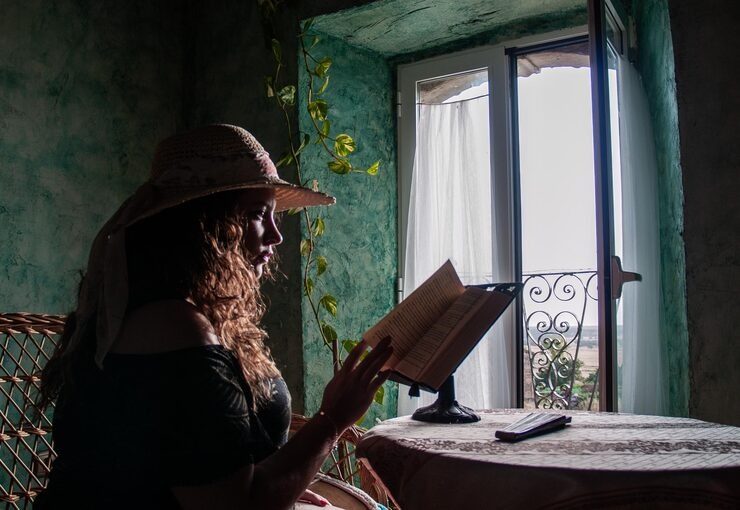Have you ever picked up a book of poems from a far-off land and felt an instant spark, like the words were written just for you? I remember sitting in a cozy café in Paris years ago, flipping through a collection of Japanese haiku. One by Basho about an old pond and a frog jumping in stopped me cold – it evoked the same quiet reflection I felt during childhood walks in the woods back home in the Midwest. That moment crystallized what I call “poemac,” a blend of “poem” and “magic” that describes poetry’s uncanny ability to link souls no matter the borders or languages between them. In this exploration, we’ll unpack how this poemac weaves through history, shares emotions universally, and even heals divides in our modern world. Drawing from personal anecdotes and global examples, let’s see why poetry isn’t just art – it’s a bridge builder that touches hearts everywhere.
What Is Poemac?
Poemac captures the enchanting way poetry transcends cultural barriers to foster empathy and understanding. It’s that invisible thread pulling strangers together through shared human experiences like love, loss, or wonder. Unlike rigid prose, poetry’s rhythm and imagery create emotional shortcuts straight to the heart.
This concept isn’t new; it’s echoed in how ancient verses still resonate today. Think of it as poetry’s secret sauce – flexible enough to adapt across tongues yet potent in evoking universal feelings.
The Origins of Poemac in Ancient Traditions
Ancient civilizations harnessed poetry’s power for unity long before modern borders existed. Epic tales like the Sumerian “Epic of Gilgamesh” blended myth and emotion, influencing stories from Greece to India. These works showed early poemac at play, connecting diverse groups through common quests for meaning.
In oral traditions, bards recited verses that preserved history and values, fostering communal bonds. This laid the foundation for poetry as a cultural connector.
Why Poemac Feels Magical in Everyday Life
Poemac shines when a line from Rumi’s Persian poetry comforts someone in America dealing with heartbreak. It reminds us we’re not alone, turning isolation into connection with a few well-chosen words.
I’ve felt this during tough times, reciting Pablo Neruda’s odes to nature for solace – his Chilean roots blending seamlessly with my own memories.
Historical Ways Poetry Has United Cultures
Poetry has long served as a diplomat, easing tensions and highlighting shared humanity amid differences. From trade routes exchanging verses to colonial eras where hybrid forms emerged, it’s bridged gaps effectively.
Think of the Silk Road, where Chinese tang poetry influenced Persian styles, creating cross-pollinated art that enriched both sides. Such exchanges demonstrate poemac’s role in historical harmony.
Poetry in Times of Conflict and Peace
During wars, poetry often voices collective grief, like Wilfred Owen’s WWI verses resonating with soldiers worldwide. In peace, festivals celebrate shared rhythms, uniting diverse audiences.
One example is the Harlem Renaissance, where African American poets drew from global influences, inspiring movements in Africa and Europe.
Cross-Cultural Poetry Exchanges in History
Medieval Europe saw Arabic poetry shape troubadour songs, blending Islamic and Christian themes. This fusion highlighted poemac’s ability to evolve through interaction.
Modern migrations continue this, with diaspora poets like Ocean Vuong merging Vietnamese heritage with American narratives.
Famous Poems That Connect Hearts Globally
Iconic poems often go viral across cultures because they tap into timeless emotions. They act as emotional passports, allowing readers to travel empathetically.
Rumi’s “The Guest House” welcomes all feelings, a message that comforts people from Tehran to Texas. Its wisdom feels personal yet universal.
Timeless Classics Bridging Divides
Homer’s “Iliad” explores war’s toll, echoing in modern conflicts worldwide. Its themes of honor and loss connect ancient Greeks to today’s readers.
Another is Tagore’s “Gitanjali,” blending Indian spirituality with Western forms, earning a Nobel and global admirers.
Modern Poems Fostering Global Empathy
Amanda Gorman’s “The Hill We Climb” at Biden’s inauguration inspired hope across continents, showing poetry’s real-time uniting power.
Warsan Shire’s “Home” captures refugee struggles, stirring compassion in distant audiences.
Diverse Voices in Contemporary Poetry
Poets like Joy Harjo, America’s first Native Poet Laureate, weave indigenous stories with broader narratives, inviting cross-cultural dialogue.
Lebanese-American Kahlil Gibran’s “The Prophet” blends Eastern and Western philosophies, a staple in weddings worldwide.
How to Experience Poemac in Your Life
Diving into global poetry starts with curiosity – read one foreign poem a week to feel the connections build. Join online communities or local readings for shared insights.
Resources abound, from apps to festivals, making poemac accessible to all.
Where to Find Cross-Cultural Poetry Collections
Libraries and sites like Poetry Foundation offer curated global sections. Bookstores often have anthologies like “The Penguin Book of International Poetry.”
For free access, Project Gutenberg hosts classics from various cultures.
Best Events and Festivals for Poetry Lovers
Attend events like the Jaipur Literature Festival, mixing Indian and international voices. Or virtual ones via YouTube channels dedicated to world poetry.
Local slams encourage multicultural sharing, turning audiences into participants.
Tools for Exploring and Creating Cross-Cultural Poetry
Digital tools make discovering poemac effortless, from translation apps to writing software. They lower barriers, letting anyone engage globally.
Start with free options before investing in premium features.
Best Apps for Translating and Reading Global Poems
Google Translate handles basic poetry, but DeepL offers nuanced renditions for deeper understanding.
Poetry apps like Poem Hunter feature user-submitted works from around the world.
Software for Writing Your Own Multicultural Verses
Scrivener helps organize ideas inspired by diverse influences. For collaboration, Google Docs allows real-time sharing with international co-writers.
AI tools like Grammarly refine language while preserving cultural nuances.
Comparing Poetry Styles Across Cultures
Eastern and Western poetry differ in form but converge in emotional depth. Haiku’s brevity contrasts sonnets’ structure, yet both evoke profound insights.
This variety enriches poemac, offering multiple lenses on life.
| Aspect | Eastern Poetry | Western Poetry |
|---|---|---|
| Form | Concise, nature-focused (e.g., haiku) | Structured, rhyme-heavy (e.g., sonnets) |
| Themes | Harmony, impermanence | Individualism, romance |
| Examples | Basho’s frog haiku | Shakespeare’s sonnets |
| Rhythm | Syllable-based | Meter and rhyme |
| Cultural Impact | Meditation aid | Dramatic expression |
This table illustrates stylistic bridges.
Pros and Cons of Eastern Styles
Pros: Promotes mindfulness; easy to memorize.
Cons: Translations may lose subtlety.
Pros and Cons of Western Styles
Pros: Emotional directness; narrative drive.
Cons: Can feel formal or outdated.
The Emotional and Social Benefits of Poemac
Poemac fosters empathy, reducing prejudices by humanizing “the other.” It sparks conversations that heal societal rifts.
With a dash of humor, like in limericks from Ireland meeting African proverbs, it lightens heavy topics.
- Builds emotional resilience through shared stories.
- Enhances language skills via multilingual exposure.
- Strengthens community ties at readings.
- Inspires activism, as seen in protest poetry.
People Also Ask
From common searches, here are real questions about poetry connecting cultures, with brief insights.
How does poetry bring people together?
It reveals common emotions, making differences feel smaller – think shared readings that spark friendships.
Why is poetry important in culture?
Poetry preserves traditions and voices underrepresented stories, keeping cultural heritage alive.
How does reciting poems help learn about cultural heritage?
Recitation embeds historical contexts and values, linking generations through rhythm and words.
Can poetry connect different cultures?
Absolutely, by translating universal themes like love or struggle into relatable forms.
FAQ
What role does poetry play in uniting cultures?
It acts as a universal language, conveying emotions that transcend words and foster mutual respect.
How can I start exploring poetry from other cultures?
Begin with anthologies like “World Poetry” and join online forums for recommendations.
Are there challenges in translating poetry across cultures?
Yes, nuances like idioms can get lost, but skilled translators preserve the essence.
Why does poetry evoke such strong connections?
Its imagery and rhythm tap into subconscious feelings, creating instant bonds.
Where can I find diverse poetry events?
Check sites like Eventbrite for global festivals or local libraries for readings.





